The Welty Prize
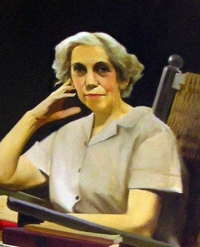
Each year Mississippi University for Women and the University Press of Mississippi collaborate to award the Welty Prize for a book of scholarship on Women’s Studies, Southern Studies, or Modern Letters—prize winning manuscripts have often combined all three of these areas.
Manuscripts must be accepted for publication by University Press of Mississippi through their regular submission process before being eligible for the prize. Those manuscripts deemed appropriate for the prize are sent to the university for final judging by a faculty panel, and the winner is published by the press and invited to speak at the Eudora Welty Writers’ Symposium in October.
The first prize was awarded in 1990 and a prize has been awarded each year since, with the exception of two years when a fitting manuscript was not published. Mississippi University for Women is proud to honor the exceptional work of the University Press of Mississippi and to promote scholarship in the fields of Women’s Studies, Southern Studies, and Literature through this prize in honor of its most famous alumna, Eudora Welty.
Welty Prize Winners
2023
Path to Grace: Reimagining the Civil Rights Movement
Ethel Morgan Smith
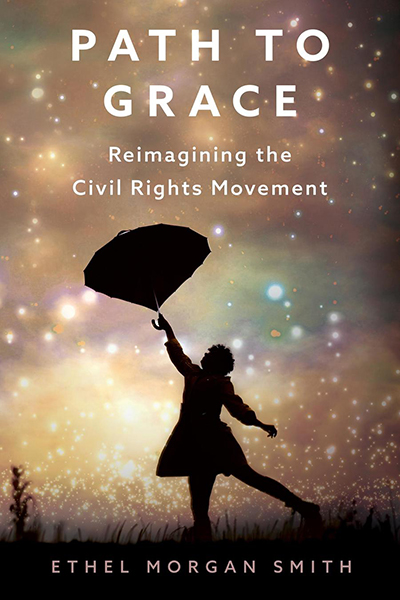
The civil rights movement is often defined narrowly, relegated to the 1950s and 1960s and populated by such colossal figures as Martin Luther King Jr. and Rosa Parks. Many forget that the movement was bigger than the figures on the frontline and that it grew from intellectual and historical efforts that continue today. In Path to Grace: Reimagining the Civil Rights Movement, Ethel Morgan Smith shines light on unsung heroes of the civil rights movement, the ordinary citizens working behind the scenes to make an impact in their communities. Through eleven original interviews with teachers, parents hosting fundraisers for civil right workers, volunteers helping with voter registration, and more, Smith highlights the contributions these figures made to the civil rights movement. Some of these brave warriors worked at the elbows of icons while others were clearing new paths, all passing through history without wide recognition. Path to Graceintroduces readers to new witnesses and largely neglected voices. Also included are interviews with such esteemed but less studied figures as writer Gloria Naylor, poet Nikki Giovanni, fashion designer Ann Lowe, and educator Constance Curry.
2022
Exposing Mississippi: Eudora Welty’s Photographic Reflections
Annette Trefzer
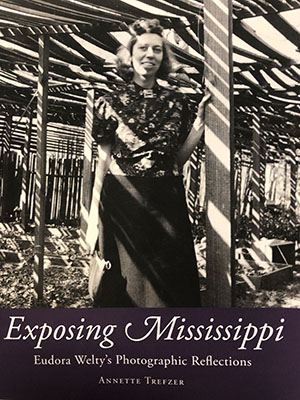
Internationally known as a writer, Eudora Welty has as well been spotlighted as a talented photographer. The prevalent idea remains that Welty simply took snapshots before she found her true calling as a renowned fiction writer. But who was Welty as a photographer? What did she see? How and why did she photograph? And what did Welty know about modern photography? In Exposing Mississippi: Eudora Welty’s Photographic Reflections, Annette Trefzer elucidates Welty’s photographic vision and answers these questions by exploring her photographic archive and writings on photography. The photographs Welty took in the 1930s and ’40s frame her visual response to the cultural landscapes of the segregated South during the Depression. The photobook One Time, One Place, which was selected, curated, and shaped into a visual narrative by Welty herself, serves as a starting point and guide for the chapters on her spatial hermeneutic. The book is divided into sections by locations and offers how the framing of these areas reveals Welty’s radical commentary of the spaces her camera captured.
2021
Marginalized: Southern Women Playwrights Confront Race, Region, and Gender
Casey Kayser
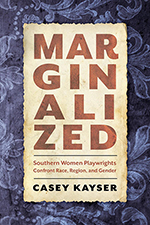
In contrast to other literary genres, drama has received little attention in southern studies, and women playwrights in general receive less recognition than their male counterparts. In Marginalized: Southern Women Playwrights Confront Race, Region, and Gender, author Casey Kayser addresses these gaps by examining the work of southern women playwrights, making the argument that representations of the American South on stage are complicated by difficulties of identity, genre, and region. Through analysis of the dramatic texts, the rhetoric of reviews of productions, as well as what the playwrights themselves have said about their plays and productions, Kayser delineates these challenges and argues that playwrights draw on various conscious strategies in response. These strategies, evident in the work of such playwrights as Pearl Cleage, Sandra Deer, Lillian Hellman, Beth Henley, Marsha Norman, and Shay Youngblood, provide them with the opportunity to lead audiences to reconsider monolithic understandings of northern and southern regions and, ultimately, create new visions of the South.
2020
Reading Testimony, Witnessing Trauma: Confronting Race, Gender, and Violence in American Literature
Eden Wales Freedman
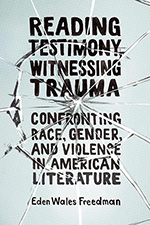
Reading Testimony, Witnessing Trauma’s innovative examinations of raced-gendered intersections open and speak with those works that promote dual-witnessing through the fraught (literary) histories of race and gender relations in America. To explicate how dual-witnessing converses with American literature, race theory, and gender criticism, the book analyzes emancipatory narratives by Sojourner Truth, Harriet Jacobs, and Elizabeth Keckley and novels by William Faulkner, Zora Neale Hurston, Margaret Walker, Toni Morrison, and Jesmyn Ward. Eden Wales Freedman articulates a theory of reading (or dual-witnessing) that explores how narrators and readers can witness trauma together. She places these original theories of traumatic reception in conversation with the African American literary tradition to speak to the histories, cultures, and traumas of African Americans, particularly the repercussions of slavery, as witnessed in African American literature.
2019
Labor Pains: New Deal Fictions of Race, Work, and Sex in the South
Christin Marie Taylor
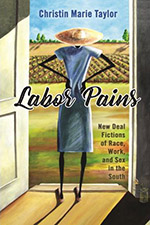
From the 1930s to the 1960s, the Popular Front produced a significant era in African American literary radicalism. While scholars have long associated the black radicalism of the Popular Front with the literary Left and the working class, Christin Marie Taylor considers how black radicalism influenced southern fiction about black workers, offering a new view of work and labor.At the height of the New Deal era and its legacies, Taylor examines how southern literature of the Popular Front not only addressed the familiar stakes of race and labor but also called upon an imagined black folk to explore questions of feeling and desire. By poring over tropes of black workers across genres of southern literature in the works of George Wylie Henderson, William Attaway, Eudora Welty, and Sarah Elizabeth Wright, Taylor reveals the broad reach of black radicalism into experiments with portraying human feelings.
2018
World War I and Southern Modernism
David A. Davis
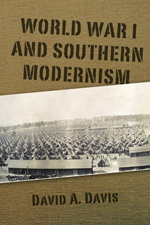
Pinpointing World War I as the catalyst, David A. Davis argues southern modernism was not a self-generating outburst of writing, but a response to the disruptions modernity generated in the region. In World War I and Southern Modernism, Davis examines dozens of works of literature by writers, including William Faulkner, Ellen Glasgow, and Claude McKay, that depict the South during the war. Topics explored in the book include contact between the North and the South, southerners who served in combat, and the developing southern economy. Davis also provides a new lens for this argument, taking a closer look at African Americans in the military and changing gender roles. David A. Davis, Macon, Georgia, is director of fellowships and scholarships, associate professor of English, and associate director of the Spencer B. King, Jr. Center for Southern Studies at Mercer University.
2017
Sanctuaries of Segregation: The Story of the Jackson Church Visit Campaign
Carter Dalton Lyon
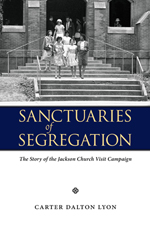
Sanctuaries of Segregation studies an important milestone in the Civil Rights movement in Mississippi’s state capital, where a sustained campaign was mounted in 1963-64. While the church visit was a common tactic of activists in the early 1960s, Jackson remained the only city where groups mounted a sustained campaign targeting a wide variety of white churches. Lyon explores its history, the attempts at interracial dialogue it inspired, and the efforts to stop the campaign by the state and the Citizen’s Council, including forty arrests. Carter Dalton Lyon chairs the History Department at St. Mary’s Episcopal School in Memphis, Tennessee.
2016
Right to Revolt: The Crusade for Racial Justice in Mississippi’s Central Piney Woods
Patricia Michelle Boyett
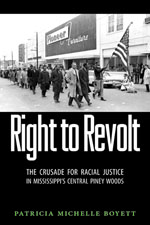
Patricia Michelle Boyett’s study of Civil Rights-era Jones and Forrest counties, begins with the tragic murder of Vernon Dahmer, and explores its causes and its aftermath. Boyett, who is the director of the Women’s Resource Center at Loyola University in New Orleans, presents a comprehensive portrait of one of the South’s most tortured and transformative landscapes, and debunks the myth of moderation by exploring the mob lynchings, police brutality, malicious prosecutions, and Klan terrorism that linked Forrest and Jones Counties since their founding.
2015
Southern Ladies and Suffragists: Julia Ward Right and Women’s Rights at the 1884 New Orleans World’s Fair
Miki Pfeffer
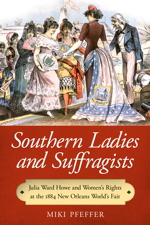
This book chronicles the successes and setbacks of a lively cast of postbellum women in the first Woman’s Department at a world’s fair in the Deep South. Women from all over the country came to New Orleans in 1884 for the Woman’s Department of the Cotton Centennial Exposition, that portion of the World’s Fair exhibition devoted to the celebration of women’s affairs and industry. Their conversations and interactions played out as a drama of personalities and sectionalism at a transitional moment in the history of the nation. These women planted seeds at the Exposition that would have otherwise taken decades to drift southward.
2014
Freedom Rider Diary: Smuggled Notes from Parchman Prison
Carol Ruth Silver
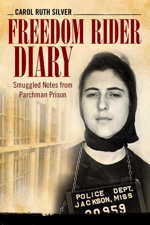
Carol Ruth Silver tells of her experiences as a young twenty-two-year-old college graduate who left New York City to join the Freedom Riders on one of the historic rides to desegregate the busses in the South. Her participation in this nonviolent civil disobedience led to her arrest and imprisonment in Parchman for forty days. The memoir recounts the experience of Silver and other members of the Congress of Racial Equality (CORE) in the charged atmosphere of the Civil Rights movement. Silver has gone on to be a successful lawyer and politician in San Francisco, as well as an advocate for women’s rights.
2013
Eudora Welty and Surrealism
Stephen Fuller
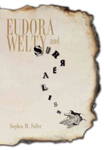
Fuller examines Eudora Welty’s most productive period, during which she wrote A Curtain of Green, The Wide Net, and Delta Wedding, and chronicles Welty’s connections to the New York school of surrealists, including Salvador Dalí, Wallace Simpson, Elizabeth Arden, and Charles Henri Ford, a Columbus, Mississippi, native who edited the influential surrealist journal View. Fuller ties Welty’s take on the Southern Gothic to these Surrealist influences and expands the scope of Welty scholarship in new and international directions.
2012
One Writer’s Garden: Eudora Welty’s Home Place
Susan Haltom and Jane Roy Brown

By the time she reached her late twenties, Eudora Welty (1909-2001) was launching a distinguished literary career. She was also becoming a capable gardener under the tutelage of her mother, Chestina Welty, who designed their modest garden in Jackson, Mississippi. From the beginning, Eudora wove images of southern flora and gardens into her writing, yet few outside her personal circle knew that the images were drawn directly from her passionate connection to and abiding knowledge of her own garden.
2011
Larry Brown: A Writer’s Life
Jean W. Cash
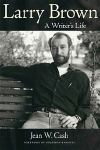
Drawing on excerpts from numerous letters and material from interviews with family members and friends, Larry Brown: A Writer’s Life is the first biography of a landmark southern writer. Jean W. Cash explores the cultural milieu of Oxford, Mississippi, and the writers who influenced Brown, including William Faulkner, Flannery O’Connor, Harry Crews, and Cormac McCarthy. She covers Brown’s history in Mississippi, the troubled family in which he grew up, and his boyhood in Tula and Yocona, Mississippi, and in Memphis, Tennessee.
2010
Under Surge, Under Siege: The Odyssey of Bay St. Louis and Katrina
Ellis Anderson

Hurricane Katrina tore into Bay St. Louis, Mississippi, raking away lives, buildings, and livelihoods in a place known for its picturesque, coastal views; its laid-back, artsy downtown; and its deep-dyed southern cordiality. The tragedy also revealed the inner workings of a community with an indomitable heart and profound neighborly bonds. Those connections often brought out the best in people under the worst of circumstances. In Under Surge, Under Siege, Ellis Anderson, who rode out the storm in her Bay St. Louis home and sheltered many neighbors afterwards, offers stories of generosity, heroism, and laughter in the midst of terror and desperate uncertainty.
2009
Eudora Welty as Photographer
Pearl McHaney, editor
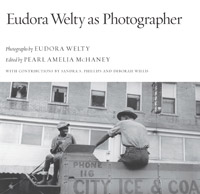
Paramount in Eudora Welty as Photographer are the photographs themselves. Only nine have been published previously. The accompanying essays–by Welty scholar Pearl Amelia McHaney; by chief curator of photography at San Francisco Museum of Modern Art Sandra S. Phillips; and by photographer and photography historian Deborah Willis–describe Welty’s developing aesthetic and her representations of the world as illustrated by the photographs. Welty took photographs of people, animals, patterns, shadows, and structures–natural and man-made–in Mississippi, Louisiana, New York, and North Carolina. The photographs are paired to contrast and complement, to surprise and suggest, and to please and provoke.
2008
Confronting Modernity: Art and Society in Louisiana
Richard Megraw
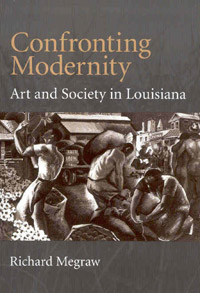
Confronting Modernity examines how the conflicts and benefits of modernity’s nationalizing influences were reflected and resisted by the state’s artists in the first half of the twentieth century. In Louisiana, such change not only produced the turbulent politics of the Huey Long era but also provoked debate over new ideas on art and social roles for artists. Artist Ellsworth Woodward and writer Lyle Saxon battled to retain artistic control over what they considered the exceptional character of Louisiana. Woodward defended localized assumptions through art in the world-renowned pottery program he established in 1892 and directed for more than forty years at Sophie Newcomb College. Saxon, on the other hand, fought against modernity’s encroachment from within, serving as director of the Federal Writers Project in Louisiana.
2007
Bohemian New Orleans: The Story of the Outsider and Loujon Press
Jeff Weddle
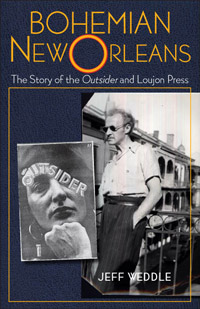
In 1960, Jon Edgar and Louise “Gypsy Lou” Webb founded Loujon Press on Royal Street in New Orleans’s French Quarter. The small publishing house quickly became a giant. Heralded by the Village Voice and the New York Times as one of the best of its day, the Outsider, the press’s literary review, featured, among others, Charles Bukowski, Allen Ginsberg, Lawrence Ferlinghetti, Robert Creeley, Denise Levertov, and Walter Lowenfels. Drawing on correspondence from many who were published in the Outsider, back issues of the Outsider, contemporary reviews, promotional materials, and interviews, Jeff Weddle shows how the press’s mandarin insistence on production quality and its eclectic editorial taste made its work nonpareil among peers in the underground. Throughout, Bohemian New Orleans reveals the messy, complex, and vagabond spirit of a lost literary age.
2006
Black Writers, White Publishers: Marketplace Politics in Twentieth-Century African American Literature
John K. Young
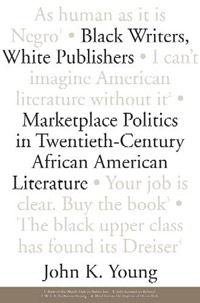
Black Writers, White Publishers is a thoughtful examination of rough drafts and marketing pressures that reveal conflicts and compromises between five great authors and their publishers. In chapters on Larsen’s Passing, Ishmael Reed’s Mumbo Jumbo, Gwendolyn Brooks’s Children Coming Home, Morrison’s “Oprah’s Book Club” selections, and Ralph Ellison’s Juneteenth, John K. Young presents the first book-length application of editorial theory to African American literature. Focusing on the manuscripts, drafts, book covers, colophons, and advertisements that trace book production, Young expands upon the concept of socialized authorship and demonstrates how the study of publishing history and practice and African American literary criticism enrich each other.
2005
Katherine Anne Porter: The Life of an Artist
Darlene Unrue
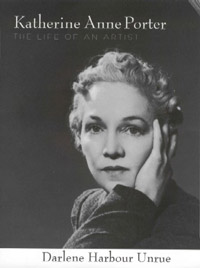
From the moment Katherine Anne Porter arrived on the American literary scene in 1922, the public was intrigued with her life. Yet she herself revealed only scant facts of her background and often gave conflicting accounts. She maintained, though, that a germ of her own experience lay at the core of everything she wrote. Unrue finds that Porter’s deceptions were a screen for deep personal turmoil. With unprecedented access to archival and personal papers, Unrue brings much new information to light. Porter’s maternal grandmother was institutionalized; Porter had more marriages than she acknowledged; she lost babies to miscarriage, abortion, and stillbirth, and she grieved over her failed motherhood. Ever present were her fears of exile and insanity.
2004
Voodoo Queen: The Spirited Lives of Marie Laveau
Martha Ward
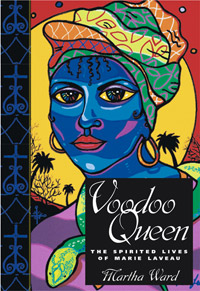
Each year, thousands of pilgrims visit the celebrated New Orleans tomb where Marie Laveau is said to lie. They seek her favors or fear her lingering influence. Voodoo Queen: The Spirited Lives of Marie Laveau is the first study of the Laveaus, mother and daughter of the same name. Both were legendary leaders of religious and spiritual traditions many still label as evil. The Laveaus were free women of color and prominent French-speaking Catholic Creoles. From the 1820s until the 1880s when one died and the other disappeared, gossip, fear, and fierce affection swirled about them. From the heart of the French Quarter, in dance, drumming, song, and spirit possession, they ruled the imagination of New Orleans.
2003
Fortune’s Favorite Child
Christopher Maurer

Walter Anderson (1903-1965) was a prolific, fiercely individual artist renowned for his matchless style, his lonely independence, and his astonishingly creative works of art. Devoted to the beauty of the natural world, Anderson emblazoned the events of his everyday life into art that expressed a unique and absorbing vision. This compelling biography, published in celebration of his centennial, draws on Anderson’s voluminous journals and graphic works, the previously unpublished papers of family members and friends, and archival materials from several American museums. In his creative diversity he was both an artist and a naturalist who left the art world paintings, prints, murals, journals, wood carvings, ceramic works, poems, aphorisms, and pen-and-ink illustrations of literary works. Despite poverty and mental anguish, Anderson called himself “Fortune’s favorite child.”
2002
Shelby Foote: A Writer’s Life
C. Stuart Chapman
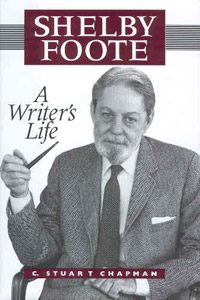
For a biographer Shelby Foote is a famously reluctant subject. In writing this biography, however, C. Stuart Chapman gained valuable access through interviews and shared correspondence, an advantage Foote rarely has granted to others. Born into Mississippi Delta gentry in 1916, Foote has engaged in a lifelong struggle with the realities behind his persona, the classic image of the southern gentleman. His polished civil graces mask a conflict deep within. Foote’s beloved South is a changing region, and even progressive change, of which Foote approves, can be unsettling. In letters and interviews, and in his writings, he often waxes nostalgic as he grapples to recover the grace of an earlier time, particularly the era of the Civil War. Indeed, Chapman reveals that the whole of Foote’s novels and historical narratives serves as a refuge from deeply ambiguous feelings.
2000
The Identity Question: Blacks and Jews in Europe and America
Robert Philipson
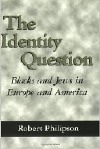
Despite the Enlightenment’s promise of utopian belonging among all citizens, blacks and Jews were excluded from the life of their host countries. In their diasporic exile both groups were marginalized as slaves, aliens, unbelievers, and frequently not fully human. The Identity Question: Blacks and Jews in Europe and America explores the effects of diaspora upon black and Jewish consciousness, demonstrating similar histories of marginality and oppression. Central to this examination are four key autobiographies, two from the late 1700s and two from recent history. The autobiographies of Richard Wright and Alfred Kazin, taken as prime twentieth-century American expressions of racial and ethnic identity, reveal striking similarities to their Enlightenment counterparts in Europe, the black Olaude Equiano and the Jewish Salomon Maimon.
1999
Autobiography as Activism: Three Black Women of the Sixties
Margo V. Perkins
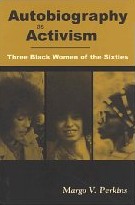
Angela Davis, Assata Shakur (a.k.a. JoAnne Chesimard), and Elaine Brown are the only women activists of the Black Power movement who have published book-length autobiographies. In bearing witness to that era, these militant newsmakers wrote in part to educate and to mobilize their anticipated readers. Margo V. Perkins’s critical analysis of their books is less a history of the movement (or of women’s involvement in it) than an exploration of the politics of storytelling for activists who choose to write their lives. Perkins examines how activists use autobiography to connect their lives to those of other activists across historical periods, to emphasize the link between the personal and the political, and to construct an alternative history that challenges dominant or conventional ways of knowing.
1998
Warring Fictions
Jim Neilson
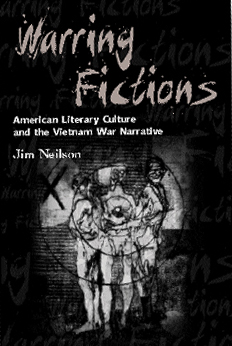
Although the Vietnam conflict ended decades ago, a fierce cultural war over how its literature is to be perceived continues to be waged. Warring Fictions accuses American critics of twenty years of whitewash and reminds us that Vietnam was not just an American anguish and its fiction a rock-and-roll acid trip. From the blind patriotism of The Green Berets to the postmodern hip of Dispatches this book brings history and politics back to the Vietnam War novel. It is a brilliant case study of canon formation and of the role commercial and academic literary institutions have played in assessing Vietnam War fiction; it exposes their complicity in the writing of recent American history and rebukes academic literary culture that speciously purports a radical calling for itself. Beyond an aca-demic audience, this book will challenge all who are piqued by studies of the war and of Vietnam War fiction. And it raises important questions about the interlocking interests and ideologies of literary culture, the publishing industry, the mass media, and the academy.
1997
Inventing Southern Literature
Michael Kreyling
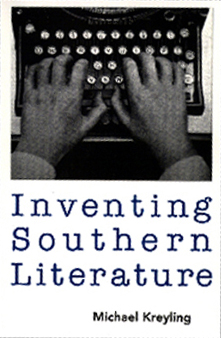
In Inventing Southern Literature, Kreyling casts a penetrating ray upon the traditional canon of southern literature and questions the modes by which it was created. He finds that it was, indeed, an invention rather than a creation. In the 1930s the foundations were laid by the Fugitive-Agrarian group, a band of poet-critics that wished not only to design but also to control the southern cultural entity in a conservative political context. From their heyday to the present, Kreyling investigates the historical conditions under which literary and cultural critics have invented “the South” and how they have chosen its representations. Through his study of these choices, Kreyling argues that interested groups have shaped meanings that preserve “a South” as “the South.”
1996
Dangerous Freedom: Fusion and Fragmentation in Toni Morrison’s Novels
Philip Page
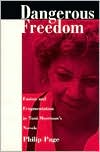
The novels of Toni Morrison depict a disjointed culture striving to coalesce in a racialized society. No other contemporary writer conveys this “double consciousness” of African-American life so faithfully. As her characters struggle to negotiate meaningful roles and identities, and as they confront the inescapable issue of division, her novels are permeated with motifs of fragmentation. This divided entity is a theme repeated throughout Morrison’s fiction. Operating on many levels, this plurality-in-unity affects narrators, chronologies, individuals, couples, families, neighborhoods, races. Philip Page’s critical interpretation of Morrison’s first six novels – Sula, Song of Solomon, The Bluest Eye, Beloved, Jazz, and Tar Baby – places her fiction in the forefront of American culture, African-American culture and contemporary thought.
1994
Ellen S. Woodward: New Deal advocate for women
Martha Swain
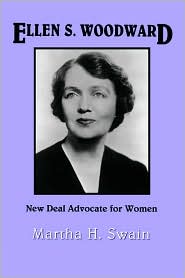
Ellen S. Woodward (1887-1971) was touted as Roosevelt’s second most powerful woman appointee. Among American women only Eleanor Roosevelt and Labor Department Secretary Frances Perkins could claim more elevated roles in the circle of FDR’s administration. This long overdue biography of such a remarkable leader traces Woodward’s odyssey from the parlors of her Mississippi clubwomen associates to a position as director of women’s work relief under three successive New Deal agencies from 1933 to 1938. Swain depicts Woodward in the vital roles she took in alleviating the working woman’s plight. Particularly rich is Swain’s account of Woodward’s attempts to remain vital in policymaking during the Truman era, when Eleanor Roosevelt was no longer the central figure of the women’s coterie.
1993
The dragon’s blood: feminist intertextuality in Eudora Welty’s The golden apples
Rebecca Mark
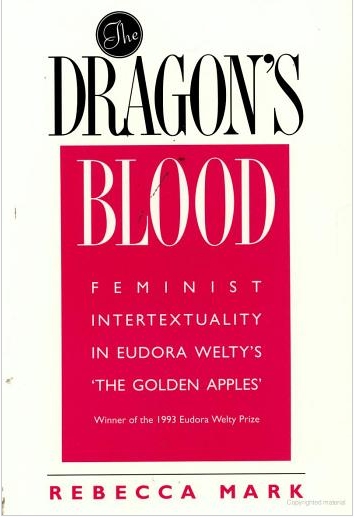
Rebecca Mark’s study proposes feminist intertextuality as a reading strategy for a critical study of Welty. Here Mark directly attacks the problem of literary influence which for decades has intrigued critics of The Golden Apples. Many have focused on its mythical dimensions. Instead, Mark finds allusions that are far more pervasive. These she sees to be a direct challenge to the dominant cultural voices of literary tradition. She argues that Welty’s text refutes the apocalypse and despair that are hallmarks formulated by Joyce and by Faulkner. She shows indeed that Welty’s text confronts one of the mainstays of western literary tradition – the indomitable hero.
1992
Feminine sense in Southern memoir: Smith, Glasgow, Welty, Hellman, Porter, and Hurston
Will Brantley
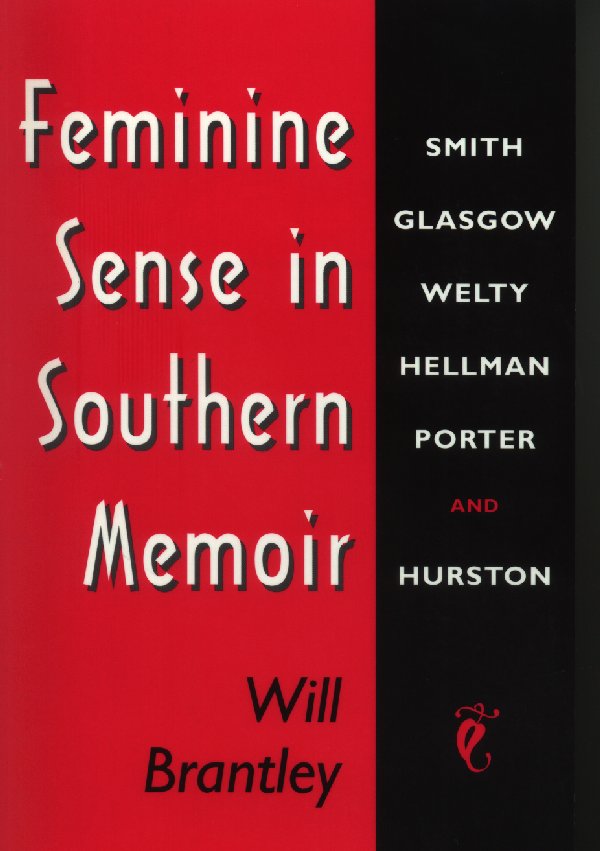
In Feminine Sense in Southern Memoir dominant themes from Smith’s autobiography, Killers of the Dream, are synthesized as other liberal feminine voices in the chorus of southern memoirs examine norms of gender, problems of race, and patriarchal power structures. Ellen Glasgow’s The Woman Within (1954) and Eudora Welty’s One Writer’s Beginnings (1984) center on the woman writer’s inner life and demonstrate the legitimacy of making this life the object of public attention. Lillian Hellman’s Scoundrel Time (1976) and Katherine Anne Porter’s The Never-Ending Wrong (1977) define the individual in conflict with reactionary forces in modern America. In Dust Tracks on a Road (1942, 1984) Zora Neale Hurston connects the problems of gender, region, nation, and race.
1991
The heart of the story: Eudora Welty’s short fiction
Peter Schmidt
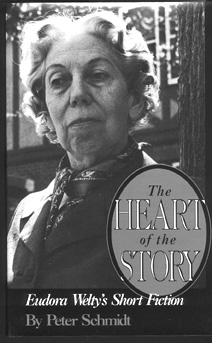
Discusses the short stories of Eudora Welty, including the portrayal of heroines and women artists, misogyny in the tragic stories, women’s comedy, and the place of her work within American women’s literature.
1990
Feminist alternatives: irony and fantasy in the contemporary novel by women
Nancy Walker
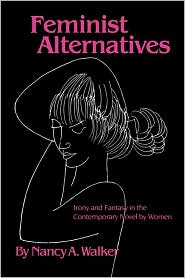
This analytical survey of contemporary fiction is a study of more than twenty-five novels written by women during a twenty-year period of rapid socio-cultural change resulting from the philosophy and goals of the contemporary women’s movement. The author contends that the novels of the period 1969-1988 served as a dialogue among women authors and their readers as they attempted to deal with dramatic alterations in attitudes toward career, sexuality, and continued tension between personal autonomy and cultural sexism. In readings of novels by American, British, and Canadian authors, including Gail Godwin, Toni Morrison, Margaret Drabble, Doris Lessing, Maxine Hong Kingston, and Margaret Atwood, the author proposes that the narrative devices of irony and fantasy are used commonly in these novels to reflect women’s increased detachment from cultural attempts to define women’s nature and role, and their need to imagine alternative ways of ordering their own lives and the structure of society itself.



